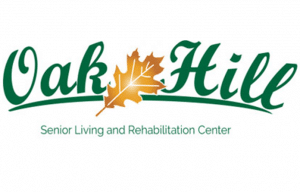The highs and lows of cannabis
Local governments throughout the state are starting the process of deciding whether they will allow marijuana businesses within their jurisdictions when the drug becomes legal for adult recreational use Jan. 1.
Monroe County is beginning to address the issue, as Columbia held a committee meeting on the issue last Monday and Waterloo is set to hold a public hearing on the matter Oct. 15.
To help residents decide their stance on this matter, this article summarizes the basics of the law and some main arguments for and against allowing cannabis businesses.
The CRTA
Signed by Gov. JB Pritzker in June, the Cannabis Regulation and Tax Act allows Illinois residents 21 and older to possess up to 30 grams of cannabis flower, five grams of cannabis concentrate and half a gram of THC in a cannabis-infused product.
Non-residents can possess half those amounts.
THC is the compound in marijuana that gets the user high.
Broadly, people will be able to consume marijuana in their private residence, but not in a public place, on school grounds, anywhere smoking is prohibited or near minors.
Employers can still prohibit employees from working under the influence, and it will still be illegal to drive with 5 or more nanograms of THC in a milliliter of whole blood or 10 nanograms per milliliter of another bodily substance.
The state will enact a 7 percent tax on the sale of cannabis to a dispensary.
Cannabis purchases by consumers will be taxed at 10 percent for products with a THC level at or below 35 percent, 25 percent for products with more than that amount and 20 percent for cannabis-infused products.
Municipalities may also impose up to a 3 percent tax on marijuana sales.
The Illinois Department of Revenue has predicted legal recreational marijuana will generate $57 million in revenue next year, with that number increasing to roughly $375 million in four years as the industry matures.
In addition to administrative costs, 35 percent of that money goes into the state’s general revenue fund; 25 percent goes to a new program for addressing issues in areas “disproportionately impacted” by the war on drugs; 20 percents goes to addressing substance abuse and prevention and mental health concerns; 10 percent goes to pay the state’s backlog of unpaid bills; 8 percent goes to local governments to combat the cannabis black market and driving under the influence of cannabis; and 2 percent goes to create a public education campaign and collect and analyze data on the impact of legalization.
A final important component of the CRTA is that it provides for the expungement of criminal records of those with minor marijuana offenses, including automatically for those who possessed 30 grams or under and did not commit a violent crime.
Some specifics of the bill could change when lawmakers go into veto session later this month, but politicians who helped pass the law have said they will merely look to clarify some language.
Pros
The arguments both for and against allowing cannabis businesses are closely related to those made about legalizing the drug.
Perhaps the main reason individuals want cannabis businesses is the potential economic benefit.
According to a Colorado Department of Public Safety report from 2018 that was hailed as fair by people on both sides of the issue, marijuana revenue rose from roughly $67.5 million in 2014 to over $247 million revenue in 2017.
According to a report aimed at finding the costs of legalization by the Centennial Institute, a Christian university in Colorado, the industry is quite the revenue generator.
“Marijuana is one of the fastest-growing sources of revenue for the state of Colorado, and the amount is beginning to outpace all revenues collected from alcohol and tobacco-products,” the study found.
The report also found, however, that for every dollar in revenue “Coloradans spend approximately $4.50 to mitigate the effects of legalization.”
Those effects are in ares including health, productivity, crime and traffic.
That number has been hotly disputed, with media outlets and pro-marijuana advocates arguing the methods used to determine that are dubious at best.
Also in the economic realm, the Washington Post reported the cannabis industry created over 18,000 full-time jobs in Colorado in 2015.
In Illinois, a final argument in favor of allowing cannabis businesses and legalizing the drug was that it would help communities “disproportionately impacted” by the war on drugs to recover.
Cons
Some of the main arguments against allowing marijuana businesses are in the areas of public health, public safety and crime.
In the first category, the CDPS found hospitalization rates per 100,000 hospitalizations for marijuana-related issues increased from 803 before legalization to 2,696 after.
Another health concern is that more people will move on to “harder” drugs because marijuana is a gateway drug, opponents say.
The National Institute on Drug Abuse reports that some studies have found using marijuana makes people more likely to use other substances like alcohol or other drugs.
“However, the majority of people who use marijuana do not go on to use other, ‘harder’ substances,” the NIDA reported.
It said more research is needed on the subject, a conclusion the Centers for Disease Control and Prevention also reached.
Finally, opponents of allowing cannabis businesses express concern they will increase underage use of the drug.
The CDPS found the number of youths who reported using cannabis in the last 30 days remained at about 19 percent before and after legalization, though the school suspension rate for drug use increased post legalization in 2014.
The expulsion rate spiked as well, but then decreased to pre-legalization levels.
Oregon, which also has legal recreational marijuana, also found the percentage of youths who used marijuana at least once were relatively unchanged, according to The Oregonian.
When it comes to public safety, the chief concern is in the area of traffic safety.
The CDPS found the number of driving under the influence citations issued by the state police decreased by over 800 from 2014 to 2017.
In that same time period, however, DUI citations where marijuana was at least one of the substances identified rose 3 percent after legalization.
More alarmingly, the study found the number of traffic fatalities where a driver tested positive for “cannabinoid-only or cannabinoid-in-combination” rose from 55 in 2013 to 139 in 2017.
But, the report cautioned “the detection of any cannabinoid in blood is not an indicator of impairment but only indicates presence in the system.”
It also discovered the number of fatalities where a driver tested positive for THC above the legal limit, a more accurate indicator of impairment, declined from 52 in 2016 to 35 in 2017.
Lastly, it found almost 1,400 motorists who were charged with DUI tested above the legal limit on cannabis in 2016. There were about 27,000 DUI cases that year.
Finally, in the area of crime, the CDPS reported arrests for marijuana possession and sales after legalization decreased, but arrests for marijuana production increased 51 percent.
Similarly, court filings with a marijuana-related felony dropped only slightly in 2017 compared to 2012, while court filings with misdemeanors and petty offenses decreased 13 and 62 percent, respectively, between those two years.
A 2018 report from the Rocky Mountain High Intensity Drug Trafficking Area, a law enforcement group against legalization, paints a bleaker picture.
It found violent crime in Colorado after 2013 increased 18.6 percent, while violent crime increased 8.3 percent, a significantly higher rate than pre-legalization.
The number of highway seizures of marijuana also went up 39 percent in the three years after legalization compared to the three years prior to legalization.
A final criminal area of concern is in the potential increase in black market marijuana activity, as people may not want to pay all the taxes and fees associated with purchasing the drug legally.
Politico Magazine reported in July that does happen in states with legal recreational marijuana.
“In many cases it has fueled rather than eliminated the black market,” the publication reported before noting that “high state taxes and fees are driving up the price of legal cannabis,” resulting in more black market activity like unlicensed businesses.
Additionally, the CDPS found the number of court filings charged in relation with organized crime linked to marijuana increased from 31 in 2012 to 119 in 2017.
It also found the number of illegal growing operations increased from eight in 2009 to 22 in 2017.
Given all that data both for and against, it is important to note something the CDPS report reminded its readers.
“It is critical to avoid ascribing changes in many social indicators solely to marijuana legalization,” the report stated.
Clearly, local governments have much to consider when deciding if cannabis businesses are right for their citizens.






